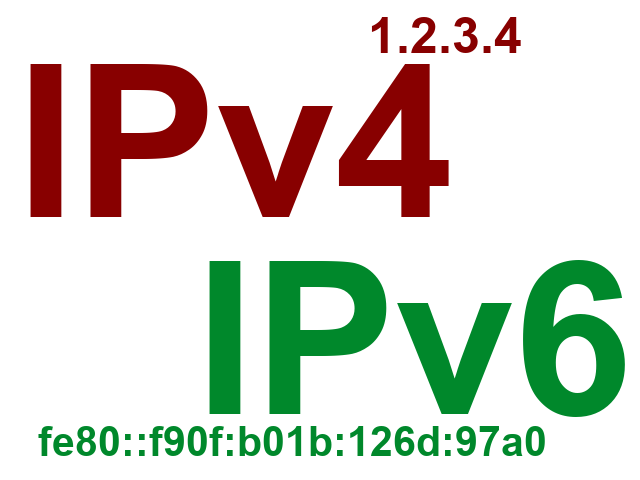Oskar loves sailing. He’s been doing it for a little over a year, and it’s the first time that he’s really taken to a sport. We’ve found a very inclusive mob of people around East Fremantle who are encouraging children to get into sailing, coupled with some awesome massively overqualified coaches (eg, State, National. and Olympic sailers) who are keen to see their little fleets of junior sailors take up the sport.
I’ve done my bit; I learnt to sail in a Mirror Dinghy, many many years ago, and in my late teen’s early twenties, learnt to sail a much larger, locally famous three-masted barquentine, Sail Training Ship Leeuwin. My formative late school years were spent around the B Sheds on the Fremantle wharf; I managed to sneak out of home to the ship as I had family with me: a second cousin who at the time was the permanent 1st mate (later captain). I used to crew, navigate, rig, and refit; the summer period in port we’d spend the time sleeping onboard taking shifts on the boat to keep it safe.
When you sail on the ship on a voyage, the young sailors are split into four Watches (teams): Red, Blue, Green, Yellow. When we were in port, and working the day down in the bilges, and guarding the ship at night, the small team would call ourselves the Black Watch. New Year’ s Eve we would even get the (small) canon out, for the strike of midnight. Yo ho ho!
Aaany ways… Oskar’s taken to sailing a small boat originally designed by the Bic pen company. This small skiff is basically a piece of hollowed plastic, a small sail, centreboard and rudder. It flips about as readily as a politician faced with the truth and facts, but luckily, as a flat piece of plastic, there’s no bailing and it rights easily. The design is now open and in a great riff on the fact that Bic started it, it’s now called the O’pen skiff. Heh – pen, get it?
Some of these kids can see when they are about to capsize, and calmy step out over the side just as the boat keels over, and have been known to seamlessly step onto the exposed centreboard, and counter the capsize!
I’ve done my bit, helping the coaches in the support boats (rigid inflatable boat or RIBs, or a classic tinny), which has mostly been about helping do running repairs, help tow stricken vessels, or swap kids in and out of boats (I’m not a soon-to-be Paris-2024 Olympian; I’ll let the pros do the instruction). But to become a little more useful, I sat the Skipper’s Ticket license (Dept Transport WA) to I can now drive the powerboats and not just be a passenger.
The Fleet of 6 – 9 boats also race in the Swan River by the East Fremantle Yacht Club. And thus, as parents stand around the shoreline at Hillary’s Marina a few weeks back, our children taking their 2-metre plastic, one parent says to me ” could we get real-time positioning and a map of their boats”.
And herein starts the rabbit hole of my first foray into IoT.
I first saw Lorawan at the AWS Summit in Sydney around 2016 or so. Back in the early 2000’s, I was playing with long-distance 802.11b, with cantennas (antennas made from large cans, and old commercial-sized coffee tin if I recall), and at one stage had a 17-metre antenna on my father’s Osborne Park factory roof, with an Apple Access Point, powered via PoE, rigged at the top. I’ve done a bit of networking over the years (I hold the AWS Certified Network – Specialty certification, and have contributed Items (questions) to it).
So now was the time to look at how do this log distance, low power, low throughput data now.
Requirements
We want to get frequent (second or two) GPS location of between 5 and 20 boats. They’ll be travelling along the Swan River, mostly (occasionally a few coastal regattas). We want to have a map showing the location of all boats, and a tail of their last few moments, and last known speed and direction. We’ll then display this map in the public spaces around the venue.
Hardware
Pretty quickly we zoomed in on the Dragino LGT-92, LoRaWAN GPS Tracker. It’s around AUD$100, and has a good battery life. It recharges by a micro USB port. It can be adjusted via a TTL serial interface (for which I don’t yet have a device to chat with it).
Noticing that I was not covered by any The Things Network (TTN) public gateways in my area, I also purchased a RAK7246 LoRaWAN Developer Gateway at $225 delivered (IoT Store Perth). And having seen the data rates I’d like to do, I’m glad I have my own gateway.
Cloud
So how does the cloud come into this? Well, the gateway device is just one part of it; it’s effectively a data forwarder. There may be multiple gateways in my network to extend coverage; yes, they could be a mesh of device, or they could be separately homed to the Internet. Each Gateway registers against a Lorawan Network Server (LNS). It is the LNS that has the central configuration of gateways and end devices, and processes the data coming from them all.
I could deploy my own LNS, or I can use the AWS Managed version of it, and then trundle the data out to the application that I want to have consume it. At this point, that application is probably just DyanmoDB, with items containing the device unique identifier, timestamp, latitude, longitude, battery level, and firmware revision. And thus, the IoT Core for Lorawan.
Getting started
As an initial overview, thanks to Greg Breen from AWS, is this YouTube video in which Ali Benfattoum describes putting these together. This video from December 2020 is now slightly out of date with the AWS Console (things move pretty quickly), but you can follow along easily enough.
The first thing I did was update the installed Raspian. A new major release has come out, so an apt-get update && apt-get dist-upgrade is in order. Some CA certificates have expired (in the chain of) one of the repositories listed in /etc/apt/apt.sources.d/, so a little bit of work to get this amenable. A quick reboot (having updated the Raspian OS) and I dutifully pulled in git as described in the above video, cloned the Lorawan BasicStation, and built it (make).
I found that the Gateway device registered exactly as shown in the video, and showed up with no problems. However, my radio devices weren’t attaching. Well, turns out there was a process running on the gateway for The Things Network, which had exclusive access to the local Lora radio. So I stopped that process, repeated, and data flowed through. Knowing I didn’t want that TTN process to restart, I found its SystemD config file in /etc/systemd/, and removed it (well, copied it away to my home directory).
The first hurdle
I rebooted the device overnight, and the next day went to restart the basic station service from the command line. But no matter what, it couldn’t turn on the local Lorawan radio.
I lucked upon a post that suggested the radio have a GPO pin reset, and that it was either pin 25 or 17 that would do the trick. Hence, I had this small script that I called reset_gw.sh:
#!/bin/sh
gpioset --mode=time --usec=500 pinctrl-bcm2835 17=1
gpioset --mode=time --usec=500 pinctrl-bcm2835 17=0
I ran this, and then the radio reset! Browsing through posts it appears that the basicstation doesn’t initalise or reset the radio; I can only presume that the TTN daemon did, and when I initially killed it and fired up basicstation, the radio was good to go. So rule now is reset the radio as part of the initalisation of basicstation; I found basicstation has support for a command line argument to call the above script.
Given I want basicstation to start and connect on boot, it needed its own startup script in /etc/system.d/system/:
[Unit]
Description=basicStation
[Service]
WorkingDirectory=/home/pi
Environment=RADIODEV=/dev/spidev0.0
ExecStart=/home/pi/basicstation/build-rpi-std/bin/station --radio-init=/home/pi/reset_gw.sh
SyslogIdentifier=basicstation
Restart=always
RestartSec=5
[Install]
WantedBy=multi-user.target
Note I also put a symlink to this in /etc/systemd/system/multi-user.target.wants/.
The other optimisation I did was to go into the WiFi settings for this little device, in /etc/wpa_supplicant/. I want to list a few networks (and preshared keys/passwords) that I want the device to just connect to. Hence my /etc/wpa_supplicant/wpa_supplicant.conf file now looks like:
ctrl_interface=DIR=/var/run/wpa_supplicant GROUP=netdev
update_config=1
country=AU
network={
ssid="22A Home"
psk="Password"
priority=1
}
network={
ssid="JEB Phone"
psk="AnotherPasswoed"
priority=2
}
No, that’s not the real password or ssid. But the JEB Phone one means that if I take the gateway on the road, I can power it up (USB) and then have it tethered to my mobile phone to backhaul the data.
The Data Flows
Following the above demo, I now have data showing up. I long pressed the one and only button on it for 5 seconds, and this is what ends up on the IoT Topic:
{
"WirelessDeviceId": "46d524e5-88f6-8852-8886-81c3b8f38888",
"PayloadData": "AAAAAAAAAABPd2Q=",
"WirelessMetadata": {
"LoRaWAN": {
"ADR": true,
"Bandwidth": 125,
"ClassB": false,
"CodeRate": "4/5",
"DataRate": "0",
"DevAddr": "01838d9f",
"DevEui": "a8408881a182fb39",
"FCnt": 5,
"FOptLen": 1,
"FPort": 2,
"Frequency": "917800000",
"Gateways": [
{
"GatewayEui": "b888ebfffe88f958",
"Rssi": -48,
"Snr": 11
}
],
"MIC": "600d5102",
"MType": "UnconfirmedDataUp",
"Major": "LoRaWANR1",
"Modulation": "LORA",
"PolarizationInversion": false,
"SpreadingFactor": 12,
"Timestamp": "2021-10-05T12:41:44Z"
}
}
}
That’s a lot of metadata for the payload of “AAAAAAAAAABPd2Q=“. That’s 11 bytes, and behold, it has data embedded in it. I used the following python to decode it:
#!/usr/bin/python3
import base64
import sys
v = base64.b64decode(sys.argv[1])
lat_raw = v[0]<<24 | v[1]<<16 | v[2]<<8 | v[3]
long_raw = v[4]<<24 | v[5]<<16 | v[6] << 8 | v[7]
if (lat_raw >> 31):
lat_parsed = (lat_raw - 2 ** 32) / 1000000
else:
lat_parsed = lat_raw/1000000
if (long_raw >> 31):
long_parsed = (long_raw - 2 ** 32) / 1000000
else:
long_parsed = long_raw/1000000
alarm = (v[8] & 0x40) > 0
batV = ((v[8] & 0x3f)<<8 | v[9]) / 1000
motion = v[10]>>6
fw = 150 + (v[10] & 0x1f)
print("Lat: {}, Long: {}".format(lat_parsed, long_parsed))
print("Alarm: {}, Battery: {}, Motion mode:{}, Fw: {}".format(alarm, batV, motion, fw))
The end result of running this with the payload a parameter on the command line shows the result:
Lat: 0.0, Long: 0.0
Alarm: True, Battery: 3.959, Motion mode:1, Fw: 154
And that’s what we expected: the alarm button was depressed. and the documentation says that when this is the case, lat and long are set to zero on the initial packet sent in alarm state.
And so
Now that I have a gateway I can move around, reboot, and have it uplink on home wifi or mobile phone tether, I can wander around and then put the token out there. What I am up to next is to pull out that payload and push it to Dynamo. Stay tuned for the next update….




